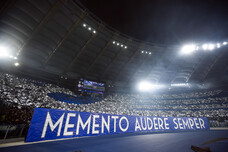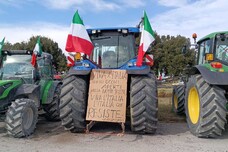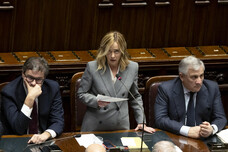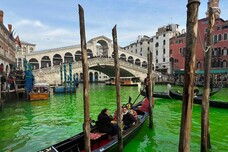Restoration work on Renaissance painter Piero della Francesca's 'Resurrection', a fresco in the civic museum of the Tuscan town of Sansepolcro where the painter was born, has revealed that the painting was originally created elsewhere and moved to its current location, Cecilia Frosinini, head of the restoration project, told ANSA on Tuesday.
Frosinini, who directs the Mural and Fresco Conservation
Department at Florence's Opificio Pietre Dure museum, said
recent investigations have shown that the fresco was cut down
and moved from its original location most likely sometime after
Della Francesca's death in 1492, for reasons that are still
unknown.
She said the work's move was probably the first of its type
in the modern age, utilizing a technique that differed from the
one known by experts and used in the 16th century by Italian
painter and architect Giorgio Vasari.
An expert archivist is now looking at archives to try to
discover where the fresco was originally painted and why it was
moved, said art historian Paola Regeni of the Superintendency of
Arezzo.
Experts said given the fresco's weight, it was most likely
painted not far from its current location in the Palazzo della
Residenza, possibly in a different room of the same building or
even a different wall in the same room.
They said the fresco was most likely moved within the first
50 years after its creation.
The restoration project was funded by the city of
Sansepolcro and with a 100,000-euro donation from Aldo Osti,
former head of pasta company Buitoni, and is scheduled to be
completed by 2017.
Restoration work by Paola Ilaria Mariotti of the Opificio
and Umberto Senserini of the Superintendency of Arezzo has
already brought back the vibrant colors of the painting that
English writer Aldous Huxley called "the most beautiful in the
world".
The restoration also revealed that the artist used a
particular mixed technique alternating fresco with areas of
painting on a dry wall, which experts said Della Francesca, "a
great experimenter", possibly used to create an effect closer to
that of panel painting.
ALL RIGHTS RESERVED © Copyright ANSA











